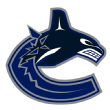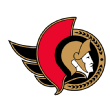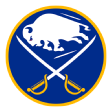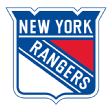Team USA enters the 2016 IIHF World Junior Championship with a roster that should be in the mix for a medal of some variety. The Americans will be looking to improve upon the results of the 2015 roster, which was eliminated in the opening game of the playoffs.
This will be the second time on the U.S. WJC roster for Auston Matthews, the Arizona-born center currently playing in Switzerland, who is ranked by many as the No. 1 prospect for the 2016 draft. He's joined in the eligible group by sons of NHL stars, as well as some of the top players drafted this past summer.
Note that some players listed here will not be on the final roster, as the team has yet to make its final cuts ahead of this column being published.
There was a lot of controversy surrounding particular USA cuts. Kyle Connor, Jeremy Bracco, Jack Roslovic and Conor Garland are all candidates to be top 100 drafted prospects right now, but they were not invited to USA Hockey's recent camp.
As of now, the top three lines are slated to be Matthew Tkachuk-Auston Matthews-Alex DeBrincat, Sonny Milano-Christian Dvorak-Colin White and Ryan MacInnis-Nick Schmaltz-Brock Boeser, with role players on the fourth line. That philosophy is certainly worthy of critique. But given the nature of the "snubbed" players, they would have had to knock out someone from one of the top three lines, which makes it a tough call. Could Connor make it over MacInnis or Garland over White or Boeser? Possibly, but there weren't clear arguments that this should be the case. The USA was going to walk into the tournament with an elite group of forwards anyway you sliced it.
Players are listed alphabetically by position, and are presented along with the NHL team that owns each player's rights, while draft prospects are denoted as such.
Forwards

Anders Bjork, LW, Boston Bruins
Bjork's projected role is a bottom-six, penalty-killing type of player who will use his speed, work ethic and hockey IQ to be a useful addition for the team. Bjork has had a quality season with Notre Dame, and was a solid contributor for the gold medal-winning IIHF under-18 championship team two years ago.

Brock Boeser, RW, Vancouver Canucks
Boeser has won me over as a legit top-end prospect this season. He's extremely smart with the puck, showing the patience and creativity to take that extra second to make an offensive play. He holds on to the puck a long time due to his size (6-foot-1, 192 pounds), work ethic and skill. Boeser's shot is also elite. His skating isn't at the same level, but he has still managed to be a big-time scorer for North Dakota.
Alex DeBrincat, RW, 2016 draft eligible
DeBrincat has won me over this season, showing exceptional amounts of offensive talent and production -- even without Connor McDavid as his center. He's a tiny guy (listed at 5-7, 161 pounds), but fearless, as he battles for every loose puck and gets to the net. The skill level is significant as well, as he creates scoring chances left and right. He could have a huge tournament for the U.S.

Ryan Donato, C, Boston Bruins
Donato was not invited to the evaluation camp at Lake Placid, New York, in August, but after a strong start with Harvard, got a look at the Boston camp. "[Donato is] a versatile, consistent performer with an edge in his game and good hockey sense," said USA general manager Jim Johannson. Expect him to fill a bottom-line role using his body, smarts and work ethic to provide some output for the team.

Christian Dvorak, C, Arizona Coyotes
Dvorak is having his second straight excellent OHL season, where he's a do-everything player for the London Knights. Dvorak is a very smart playmaker with speed that's a tick above average. He always finds himself around the puck, and has the creativity to make things happen in space.
Scott Eansor, C, 2016 draft eligible
Eansor is not a top prospect by any means, nor has he put up big scoring numbers in the WHL. He has some tools though, as he's a solid skater with some "escapability" skills in his game. Eansor will be a two-way type of forward if he's in the lineup regularly, and he can kill penalties and create a little bit offensively with the puck.
Ryan Hitchcock, LW, 2016 draft eligible
I've always thought Hitchcock was a decent prospect, even as he has gone two straight years without being picked in the NHL draft. He's small (5-10, 170 pounds) and not a high-end skill guy, but he has decent all-around tools between his speed, hands and creativity. The current Yale Bulldog may be one of the final cuts, or he could be a nice depth option.
Clayton Keller, C, 2016 draft eligible
In a deep American draft class, Keller has elevated himself into the conversation of the top draft prospects eligible this June. "Whether it be the USHL, NCAA or international, he dominates the opposition," Johannson noted. His skating is elite, he makes really high-end passes seem normal, and he processes the game very quickly. The only thing holding Keller back is his size (5-10, 170 pounds) and underwhelming strength level.

Ryan MacInnis, C, Arizona Coyotes
Son of legendary NHL defenseman Al MacInnis, Ryan has shown significant improvements from his draft season, adding needed strength and speed to his game. He has always been a very gifted and creative playmaker, but has really improved on creating new dimensions to his game, making him a more dangerous goal scorer and a threat down low. The heart of his game is still making plays in open ice, though.
Auston Matthews, C, 2016 draft eligible
The heavy favorite to be selected first overall next June, Matthews is a true game-breaking center. His skill is elite, and given his pro size (he's already 6-2, 194 pounds at age 18), he's a nightmare to check, as he can barrel his way through defenders just as easily as he goes around them. In my viewings of Matthews, I've seen him make the type of offensive plays few other players can execute, as his offensive IQ is also of the elite quality. Expect him to be one of the top players at this tournament.

Sonny Milano, LW, Columbus Blue Jackets
Milano has been decent to start his pro career. "There's a lot of things he needs to work on off the puck, but his skill level is unbelievable," said one scout who saw Milano recently in Lake Erie. However, Milano should shine at the under-20 level, as he's one of the most imaginative players in his age group.

Nick Schmaltz, C, Chicago Blackhawks
Schmaltz has been one of the top players overall, and arguably the top setup guy in the NCAA this season playing for North Dakota. His skating is very good, he makes skill plays seem easy and his vision is high-end. There are ways you can poke holes in Schmaltz's game; he's still prone to going invisible for stretches and doesn't get to the net very well, on top of iffy defense. The offense is hard to ignore, though.
Matthew Tkachuk, LW, 2016 draft eligible
Tkachuk -- the eldest son of Keith Tkachuk -- is expected to slot to the left of Matthews, as he did for years when both skated for the USNTDP. Tkachuk has been great for London in the OHL, being one of the top scorers in the league. Tkachuk brings a combination of high-end puck skills, hockey sense and competitiveness to the table.

Colin White, C, Ottawa Senators
White has been outstanding to start the season for Boston College, ranking in the top 10 in the nation in scoring. "He's a very good two-way player," said Johannson, adding that "the offense has been a little bit of a surprise." White isn't overly flashy, but he's so smart and aggravating to play against due to his anticipation. He should be a versatile player in this tourney.
Defensemen

Louis Belpedio, D, Minnesota Wild
Belpedio is a fun player to watch. He's a very good skater, has above-average skill with the puck, and plays the game hard every shift. He's an undersized defender at 5-10, 190 pounds, but he can still win some battles, on top of being a quality power-play asset.

Will Borgen, D, Buffalo Sabres
Like Donato, Borgen wasn't at the Lake Placid summer camp, but a strong freshman campaign at St. Cloud State got him noticed. He's big, strong and mobile, and while his play doesn't scream "offense," he has a decent IQ on that side of things. He showed steady play at the Boston December camp.

Brandon Carlo, D, Boston Bruins
Carlo is a returnee from last season. He is expected to be a leaned-on penalty killer who is there for tough defensive situations. Carlo's skating is solid for a big man -- he's 6-5, 203 pounds -- albeit not immaculate. His puck movement also shows signs of patience and awareness, even if he's not going to dangle anyone on a rush. Carlo's huge frame is one of his main assets, and he doesn't shy away from the physical stuff.

Ryan Collins, D, Columbus Blue Jackets
Collins had a disappointing WJC last year, and he'll look to make up for that as a defense-oriented defender this time around. He's pretty mobile for a big man, with solid hockey sense. His puck skills are pretty limited, and I've always been left wondering how much he can do as a pro given that limitation; however, versus his age group he should prove to be decent.
Brandon Fortunato, D, 2016 draft eligible
Twice passed over in the draft, Fortunato is another guy on the smaller side (5-10, 150 pounds) who has always impressed me with his offensive acumen, skating and ability to control a power play. Fortunato can struggle in his own end at times, with players taking advantage of his diminutive stature. Playing for Boston University, he has been a quality puck mover.
Chad Krys, D, 2016 draft eligible
I'm slightly down on Krys as a prospect from where I was at the start of the season, but he still remains a first-round-caliber player who has a lot of strong tools. He's a high-end skater who sees the ice as well as nearly any defender in his draft class. However, every NHL scout I've talked to wonders if a small defender like him will be able to handle life in his own end as a pro.
Charlie McAvoy, D, 2016 draft eligible
McAvoy is going to get a lot of responsibility for Team USA. He's a mobile and skilled defenseman with size who has played very well as a freshman at Boston University. He'll be a staple on the power play, being able to display his shiftiness and vision from the point. His defense isn't perfect, but it has come along well in the past 12 months.

Zach Werenski, D, Columbus Blue Jackets
On a poor USA defensive squad (relative to usual standards), Werenski is expected to be the captain, anchor, life vest and whatever other nautical reference you can come up with. He's a big-time puck mover with above-average or better skating, hands and vision who can be decent in his own end too. Expect his ice time to hit 25 minutes per game (if not more) during this tournament.
Goaltenders

Brandon Halverson, G, New York Rangers
Halverson is another returning member for the U.S. He has struggled a little this season in the OHL, but he's a big, toolsy goaltender who is one of the better puck handlers you'll see between the pipes. On his best nights, Halverson can make the game look easy, but I don't love his reads or reactions at times, and I've seen him give up too many easy goals.

Alex Nedeljkovic, G, Carolina Hurricanes
Nedeljkovic has had a very successful OHL career during the past three and a half years, and was very good for the U.S. in net at the world under-18 championship two years ago. He's slightly undersized, but moves very well in net, reading puck movements effectively with top-end ability to go out and get pucks beyond his body. He should be the starting netminder for the U.S. at this tournament.
